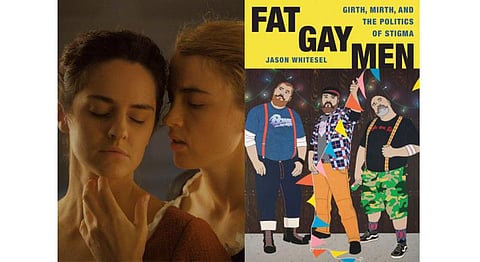
- HOMEGROWN WORLD
- #HGCREATORS
- #HGEXPLORE
- #HGVOICES
- #HGSHOP
- CAREERS
- ABOUT US
- CONTACT US

How bodies look, ours or others, consume a major chunk of our social cognition. Constant battles with both the self and with other ideas of an ideal body, transpire in every arena of our society. Fatphobia is an old yet omnipresent issue that looks down upon individuals who are anything but skinny and whose bodies don’t fit into the cookie-cutter definition of beauty drawn out by societal hierarchies. The presence of fatphobia doesn’t discriminate as you’ll find it in every country, culture, community etc.
The queer community is not exclusive to this phenomenon. The essentiality of incorporating intersectionality in the queer space is no longer an uncommon idea. We talk about the role that caste, religion, and race plays in placing sexual minorities in a further disadvantageous position. What is often missed out, is the struggle of fat or plus-sized queer individuals in finding love and acceptance in the same community. This is strongly overlooked and fuelled by the obsession of queer cinema with thinness and a fixed aesthetic.
Queer Cinema
If we list down all popular queer movies that have made an impact, we note that barely any of them provide representation for plus-sized queer individuals. It is next to impossible to spot a movie that follows the conventional fairy tale love story but where the characters that are falling in love aren’t heterosexual, conventionally attractive or thin. The media and television and social media feed the idea into impressionable minds that queerness follows a certain aesthetic. They must look and talk a certain way which is deemed conventionally attractive.
Whilst people might consider this an unnecessary criticism, the inclusion of each body type in cinematic representation is a quintessential turning point for both societal and self-acceptance. Most, if not all, people derive some inspiration from movies and shows to build their idea of love. We watch romantic comedies and envision ourselves living them out one day. So, when these rom-coms only showcase a specific type of face, body and behaviour, it slowly gets engrained in our minds that, we must follow these notions to find affection.
The Dangers Of Homogenous Ideas of Love
Now, double this subtle brainwashing with the lack of queer representation in general. A young, plus-sized, queer girl watches these endless movies that tell her that the perfect love story begins only when you are conforming to heteronormative rules and the inexplicable thinness that comes with them. It pushes her to think that it is impossible to look and feel like her and find someone who loves her. We convolute young people’s idea of love and self, all at the same time.
Intersectionality is so crucial when representing a diverse community like the queer community, wherein the experience of a South Asian queer person will be vastly different to someone born in the west. When we acknowledge that culture can play a role in deciding the nature of oppression you face as a sexual and gender minority, why must we ignore the role of beauty standards in demarcating distinctions in queer experiences?
If you enjoyed reading this, we also suggest:
